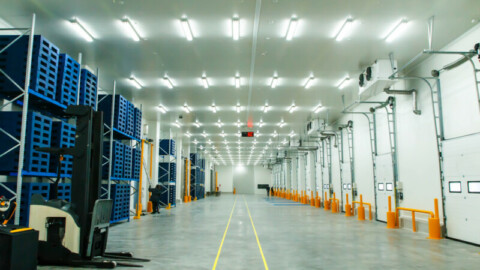ClimateWorks Australia has released a report which shows that Australia has the potential to reduce its reliance on gas by 25 per cent by 2030, with energy efficient pumps and variable speed drives playing a role in achieving this.
ClimateWorks Australia Head of Research, Amandine Denis-Ryan, said the report, Solving the gas crisis: A big problem deserves a big solution, found the national demand for gas could be reduced by 321PJ by 2030 by implementing energy efficiency measures and switching to low carbon energy sources in industry and buildings.
Ms Denis-Ryan said the report shows that expected savings could meet up to 70 per cent of the projected gas supply shortfall of 465PJ by 2030, while lowering energy costs for all gas users.
“Currently Australia is facing a gas shortfall due to a mismatch between domestic supply and demand in the east coast market, driven by rapid growth in the LNG export market and the absence of a comprehensive national energy policy,” Ms Denis-Ryan said.
“Without any changes, gas prices could continue to rise, leading to negative impacts on industry profitability, potentially leading to closures and job losses.
“Rather than simply focusing on bolstering gas supply, demand side improvements – such as energy efficiency measures and fuel shifting – can reduce the amount of gas needed to meet economic requirements and reduce energy bills for households and businesses.”
Ms Denis-Ryan said the report found there were significant opportunities to reduce gas demand through a combination of energy efficiency and fuel shifting in industry and the buildings sector.
“The largest opportunity exists in industry, where about 200PJ savings could be delivered. Slightly more than half of the opportunity would come from energy efficiency improvements such as reusing waste heat or upgrading to more efficient boilers. The rest of the opportunity would come from fuel shifting, for example by using electricity, solar thermal energy or bioenergy to provide industrial heat,” Ms Denis-Ryan said.
“A further 90PJ savings could come from improvements in our commercial and residential buildings. Nearly two thirds of this opportunity would come from energy efficiency improvements, such as improving the building shells, implementing better temperature controls or upgrading water and space heating equipment. The rest of the savings would come from switching from gas for water and space heating to electric heat pumps (including split system air conditioners).
“The remaining potential (30PJ) would come from the electricity generation sector thanks to energy efficiency improvements across buildings and industry which reduce demand for electricity such as upgrading to more efficient appliances or implementing variable speed drives on motors.”
Ms Denis-Ryan said reducing gas demand would deliver cost-savings and productivity benefits for industry while helping meet Australia’s emissions and productivity targets.
“The report shows that implementing all the opportunities to reduce Australia’s gas use could contribute up to half of the national energy productivity target and up to 16 MtCO2e which is 12 per cent of what’s needed to meet our 2030 emissions reduction target,” Ms Denis-Ryan said.
“It can also help improve the productivity and competitiveness of Australian companies. Our research of domestic and global companies found that leaders in energy efficiency consistently achieve large energy savings – between one to two per cent per annum – which is much higher than other companies in the same sector.
“This is particularly important for Australian companies as the country is lagging behind other developed economies in terms of energy productivity, at a time when energy prices are soaring.”
Ms Denis-Ryan said additional government policy was required to assist industry and business take up opportunities to reduce their gas use.
“The research shows industry face significant barriers to invest in energy efficiency and fuel switching opportunities including capital constraints, a lack of skills, information, expertise and motivation,” Ms Denis-Ryan said.
“Governments can build upon existing policy frameworks to deliver the support that is needed through the National Energy Productivity Plan, the Emission Reduction Fund as well as policy at the state level and programs by the Clean Energy Finance Corporation and the Australian Renewable Energy Agency.”


















